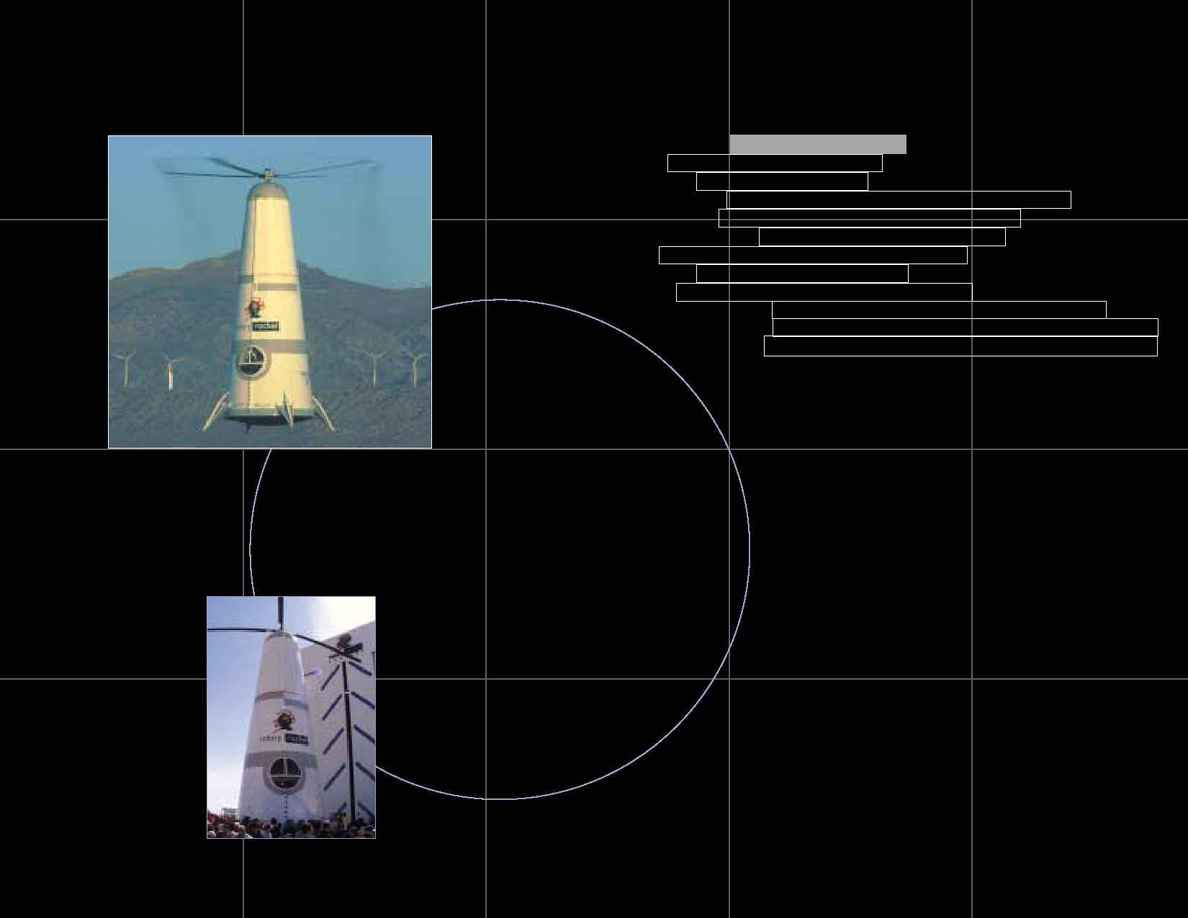
R O T O N
R O T O N
Passengers: TBD
Flight Crew: 2
Max Speed: Mach 25.7* / 17,000 mph (27,370 kph)
Max Altitude: Low earth orbit or sub-orbital
Minutes of Zero Gravity: 5+ (sub-orbital)
Diameter: 22ft. / 6.7 m maximum
Height: 64 ft / 19.5 m
Weight: 400,000 lbs. (181,818 kg)
Propulsion System: Derived Fastrac Engine.
Several engines to provide the necessary thrust at liftoff. Controlled,
soft, landing using autorotating rotor and tip mounted rocket motors.
*Mach calculated at sea level.
A revolutionary sub-orbital and orbital reusable launch vehicle.
RLV Specs
The Rotary Rocket Company's RotonTM is a reusable single-stage-to-orbit (SSTO) launch vehicle designed from the outset to provide rapid and routine
access to orbit. The Roton will transport up to 7,000 lbs. (3,182 kg) to and from low Earth orbit in a highly cost-effective manner. To date the Rotary Rocket
Company has constructed and successfully test flown a full-scale atmospheric test vehicle (ATV) known as the Roton ATV. The Roton ATV was designed
to flight test the use of tip rocket powered helicopter blades for soft landing the Roton after returning from space.
The Roton flight profile: Liquid rocket engines will lift the Roton off vertically from its launch pad and accelerate it to
sub-orbital or orbital velocity depending on the flight plan. Once a space mission is complete the Roton orients for re-
entry and deploys its rotor blades. The rotor blades will be allowed to spin freely during re-entry and through most of
the denser upper atmosphere. Prior to landing, tip rockets in the rotor blades are fired allowing the Roton to maneuver,
or loiter, just like a helicopter. Once in position not far from its launch site, landing gear is deployed and the Roton makes
a soft landing on its launch pad.
